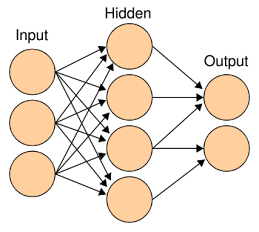- Signal processing: suppress line noise, with adaptive echo canceling, blind source separation
- Control: e.g. backing up a truck: cab position, rear position, and match with the dock get converted to steering instructions. Manufacturing plants for controlling automated machines.
- Siemens successfully uses neural networks for process automation in basic industries, e.g., in rolling mill control more than 100 neural networks do their job, 24 hours a day
- Robotics - navigation, vision recognition
- Pattern recognition, i.e. recognizing handwritten characters, e.g. the current version of Apple's Newton uses a neural net
- Medicine, i.e. storing medical records based on case information
- Speech production: reading text aloud (NETtalk)
- Speech recognition
- Vision: face recognition , edge detection, visual search engines
- Business,e.g.. rules for mortgage decisions are extracted from past decisions made by experienced evaluators, resulting in a network that has a high level of agreement with human experts.
- Financial Applications: time series analysis, stock market prediction
- Data Compression: speech signal, image, e.g. faces
- Game Playing: backgammon, chess, go, ...
http://www.willamette.edu/~gorr/classes/cs449/motivate.htm
